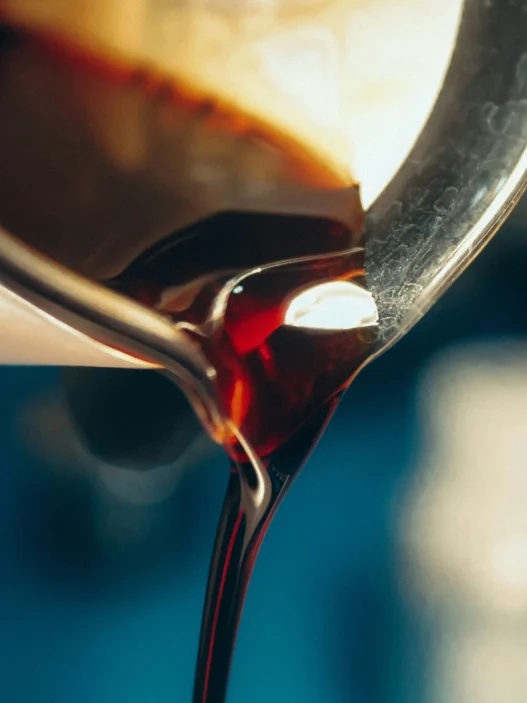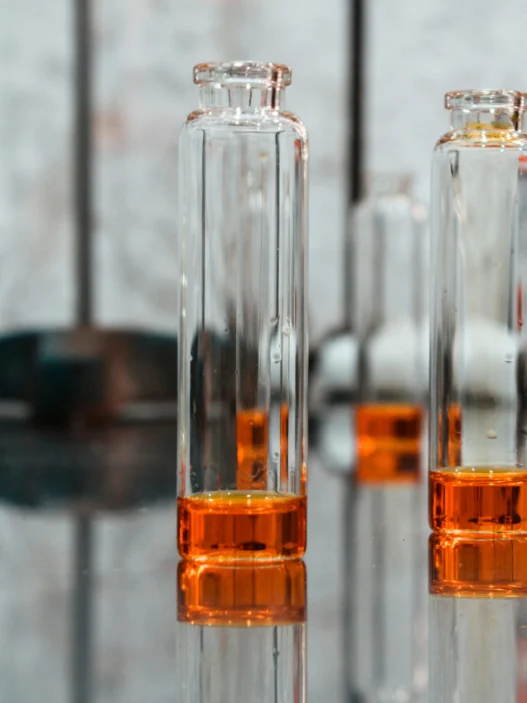Gamma-Octalactone is a compound commonly found in various foods and beverages, offering a distinct coconut-like aroma and flavor. Its presence contributes to the overall sensory experience of many consumer products, including baked goods, dairy products, and liquors. Therefore, understanding the sensory impact of gamma-Octalactone is relevant in both the food industry and everyday life, as it plays a key role in shaping our sensory preferences and enjoying various consumables.
Table of Contents:
- 💡 Commercial Applications
- ⚗️ Chemical & Physical Properties
- 🏭 Production & Procurement
- ⚠️ Safety Considerations
- 🔬 Potential Research Directions
- 🧪 Related Compounds
💡 Commercial Applications
Gamma-Octalactone, commonly known as coconut lactone, is a chemical compound with a characteristic coconut scent. Its commercial and industrial applications are primarily focused on the fragrance industry. It is used as a flavoring agent in food products, as well as in perfumes, cosmetics, and household products for its sweet and tropical aroma.
In the pharmaceutical industry, gamma-Octalactone has been studied for potential drug and medication applications. Research has shown that this compound possesses antimicrobial properties, making it a candidate for use in antimicrobial formulations. Additionally, gamma-Octalactone has shown promise in reducing inflammation, making it a potential ingredient in anti-inflammatory medications. Further studies are needed to fully understand the therapeutic potential of this compound.
While the commercial and industrial applications of gamma-Octalactone are well-established, its potential pharmaceutical applications are still being explored. The unique coconut scent of this compound makes it a valuable ingredient in a variety of consumer products. As research continues, gamma-Octalactone may find new applications in the pharmaceutical industry for its antimicrobial and anti-inflammatory properties.
⚗️ Chemical & Physical Properties
Gamma-Octalactone is a colorless to pale yellow liquid with a sweet, creamy, coconut-like odor. It is notably used in the fragrance and flavor industry due to its pleasant scent.
With a molar mass of 160.24 g/mol and a density of approximately 0.960 g/cm³, gamma-Octalactone falls within the range of common food items like water (molar mass: 18.02 g/mol, density: 1.00 g/cm³) and olive oil (molar mass: ~270 g/mol, density: ~0.92 g/cm³).
The melting point of gamma-Octalactone ranges from 16 to 18°C, and its boiling point is around 262 to 265°C. Compared to common food items like butter (melting point: ~32-35°C, boiling point: >200°C), it has a lower melting point but higher boiling point.
Gamma-Octalactone is sparingly soluble in water and relatively viscous in its liquid state. This is in contrast to many common food items like sugar (highly soluble) and vegetable oil (low viscosity).
🏭 Production & Procurement
Gamma-Octalactone is primarily produced through a chemical process known as the hydrogenation of castor oil or the oxidation of gamma-octalactone with copper compounds. These methods yield high-purity gamma-octalactone, a compound commonly used in the fragrance and flavor industries.
Gamma-Octalactone can be procured through specialized chemical suppliers who produce and distribute this compound for industrial use. The compound is typically transported in sealed containers to ensure its stability and purity during transit. It is important to adhere to proper handling and storage guidelines to prevent degradation of the compound.
When procuring gamma-Octalactone, it is essential to verify the supplier’s compliance with regulatory standards to ensure the quality and safety of the compound. Suppliers should provide documentation certifying the purity and origin of the gamma-Octalactone, as well as information on proper handling and storage procedures. Adhering to these guidelines is crucial to maintaining the integrity of the compound for its intended applications.
⚠️ Safety Considerations
Safety considerations for gamma-Octalactone include its potential flammability, irritant properties, and possible toxicity. It is important to handle this chemical with care, avoiding contact with skin, eyes, and mucous membranes. Proper ventilation should be ensured when working with gamma-Octalactone to prevent inhalation of vapors. Personal protective equipment, such as gloves and goggles, should be worn to minimize exposure to the substance.
Hazard statements for gamma-Octalactone include its flammable properties, potential skin and eye irritation, and the possibility of causing respiratory irritation. This chemical should be kept away from heat, sparks, and open flames to prevent fire or explosion. Contact with skin and eyes should be avoided, and exposure to vapors should be minimized. In case of ingestion, medical attention should be sought immediately, and the individual should not induce vomiting.
Precautionary statements for gamma-Octalactone include storing the chemical in a cool, dry place away from heat sources and incompatible materials. Handling should be done in a well-ventilated area to prevent inhalation of vapors. Skin contact should be avoided, and any spills should be cleaned up promptly to prevent further exposure. Personal protective equipment should be worn at all times when working with gamma-Octalactone, and thorough hand washing should be performed after handling the substance.
🔬 Potential Research Directions
One potential research direction for gamma-Octalactone is the investigation of its olfactory properties and potential applications in the flavor and fragrance industry. Studies may focus on understanding how this compound interacts with olfactory receptors in the human nose and how it contributes to overall scent perceptions.
Another area of interest could be exploring the synthesis of gamma-Octalactone through different chemical pathways, potentially yielding variants with modified properties. This research could lead to the development of more efficient and sustainable methods for producing this compound, which is commonly found in various fruits and dairy products.
Furthermore, research could be conducted on the potential biological activities of gamma-Octalactone, including its anti-microbial or anti-inflammatory properties. Understanding the biological effects of this compound may provide new insights into its potential applications in pharmaceutical or cosmetic products.
🧪 Related Compounds
One similar compound to gamma-Octalactone with a comparable molecular structure is delta-Octalactone. This compound is also an eight-carbon lactone with a carbonyl group attached to the gamma position. Delta-Octalactone is commonly found in various fruits and has a sweet, creamy odor often used in the food and fragrance industry.
Another compound akin to gamma-Octalactone is epsilon-Octalactone. Like gamma-Octalactone, epsilon-Octalactone is an eight-carbon lactone with a similar molecular structure. This compound possesses a fruity aroma often described as coconut-like and is used in flavorings and fragrances to impart a sweet, tropical quality.
Beta-Octalactone is another molecule closely related to gamma-Octalactone in terms of molecular structure. As an eight-carbon lactone, beta-Octalactone features a carbonyl group attached to the beta position, giving it a slightly different odor profile compared to gamma-Octalactone. Beta-Octalactone is commonly used in the production of flavors and fragrances for its creamy, dairy-like scent.





